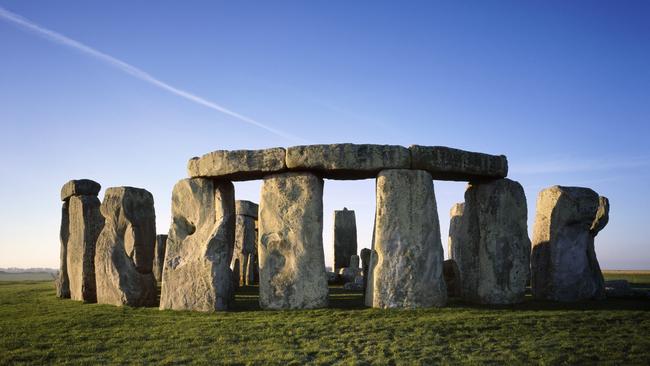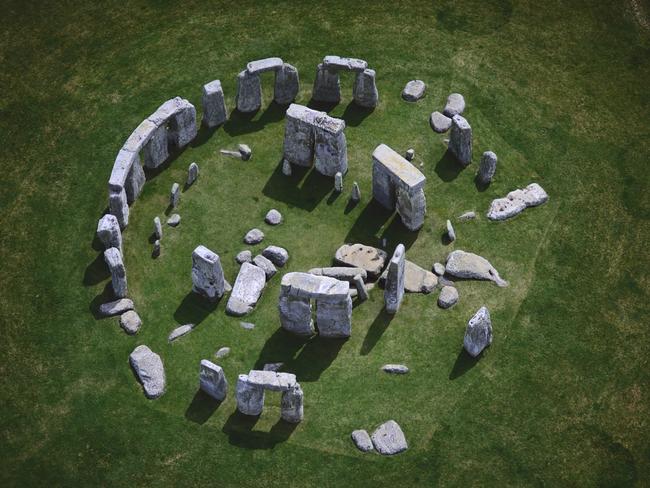Stonehenge secret: Did builders use Pythagoras’ theorem 2000 years before the philosopher lived?
A NEW book suggests the builders of the famous site were privy to a mathematical theorem of a famous Greek philosopher two millennia before he developed it.
THE famous ancient site at Stonehenge may have been built using Greek philosopher Pythagoras’ famous theorem two millennia before the mathematical equation was developed, experts say.
A new book titled Megalith: Studies in Stone, argues that the same geometric principles that framed Pythagoras’ famous work can be found at the prehistoric site. The book’s publication coincides with the Thursday’s summer solstice, which is closely associated with Stonehenge.
The World Heritage site is known for its alignment with the movements of the Sun — thousands travel to the site in Avebury, southwest England, to mark the solstices in Summer and Winter.
The first monument at the site, an early “henge” monument, was constructed about 5000 years ago. The world-famous stone circle was built around 2500BC during the late Neolithic Period.

Citing the book’s authors, The Telegraph in the UK reports that a rectangle of four Sarsen stones, or sandstone blocks, when split in half diagonally, forms a perfect Pythagorean 5:12:13 triangle. The Sarsen stones date to 2750BC.
One of the book’s contributors, Robin Heath, also proposes the existence of a great Pythagorean triangle in the English landscape link Stonehenge, the site in Wales from which its bluestones were cut, and Lundy Island, a prehistoric site in England’s Bristol Channel.
Greek philosopher Pythagoras is credited with discovering the famous geometric theorem stating that, in a right-angled triangle “the square of the hypotenuse is equal to the sum of the squares of the other two sides,” often written as a^2 + b^2 = c^2. Pythagoras is believed to have lived in the 6th and 5th centuries BC.

In addition to the Stonehenge researchers, other experts say that they have found evidence of the famous theorem long before the time of Pythagoras. Last year, for example, scientists revealed the secrets of a mysterious 3700-year-old Babylonian clay tablet, which they describe as the world’s oldest and most accurate trigonometric table.
The tablet, known as Plimpton 322, was discovered in the early 1900s in what is now Southern Iraq by archaeologist, academic, diplomat and antiquities dealer Edgar James Banks, who provided the inspiration for the fictional character Indiana Jones.
Thousands watched the sun glint over the horizon at Stonehenge on Thursday. The sun rose behind the Heel Stone, which traditionally marks the spot on the horizon for the sunrise.
Crowds cheered and raised mobile phones for images as the rays flooded through the monument and announced the longest day of the year in the Northern Hemisphere.
This article originally appeared on Fox News and was republished here with permission.




